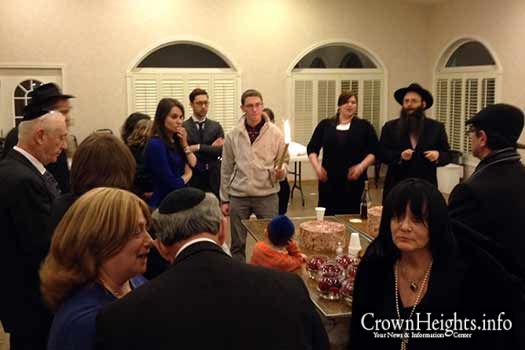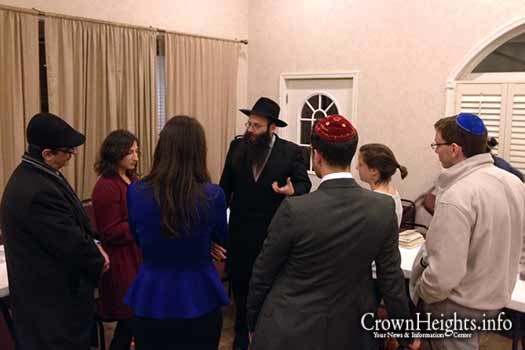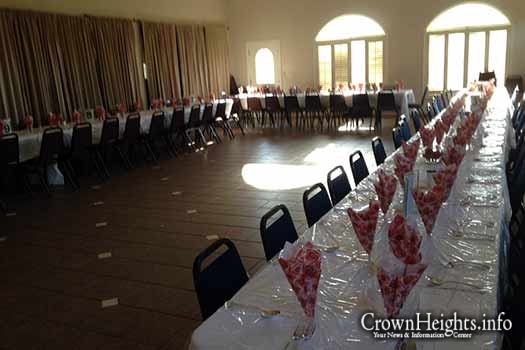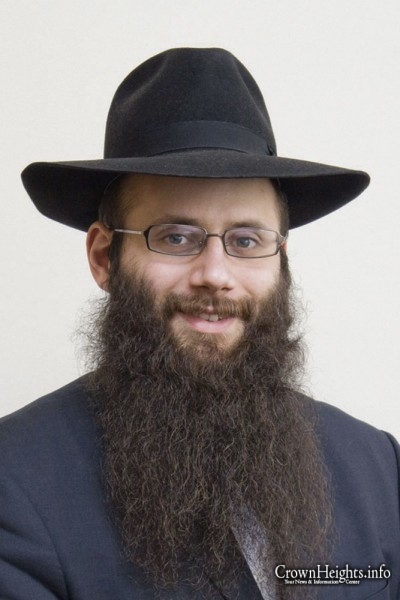
Over 150 Attended Shabbaton on Faith and Science
Over 150 attended Shabbaton on faith and science at Chabad of Western Monmouth County, with B.U. Chemist Dr. Binyomin Abrams. One of the Shabbos’s highlights was a Farbrengen, which began following Shabbos lunch, and lasted well after Shabbos ended and greatly inspiring all who attended.
While they may not be obvious to some people, there are many intersections between the principles of faith and science, according to Dr. Binyomin Abrams.
When he is not lecturing on chemistry at Boston University, Abrams is a frequent speaker at Chabad gatherings, focusing on his own journey from a mostly secular upbringing to a deep religious observance, and his reconciliation of faith and science.
“These are not mutually exclusive concepts,” he said during a phone interview, although, he admitted, there was a time when he thought they might be. “The Lubavitcher Rebbe taught me that faith is not the absence of questions, but the ability to believe despite those questions. This is an intellectually challenging position, and one that appeals to me as a scientist.”
Abrams told his story over the weekend, at Chabad of Western Monmouth County in Manalapan, NJ.
On Friday, the focus was on the speaker’s life experiences. A native of Montreal, Abrams attended a Jewish high school, where, he said, most students were heedless of the commandments. What he did get from those years was an ability to read Hebrew. He also maintained a firm belief in God throughout his youth.
But religious practice was not a major part of his life. Until, that is, when he was a graduate student at New York University.
“Passover came, and I wasn’t able to go home for the holiday,” he said. He received an e-mail from the local Chabad, inviting him to come to their seder — free of charge. “I was a graduate student, so that was an offer I couldn’t turn down,” Abrams said.
Looking back, he noted, he still doesn’t know how Chabad got his e-mail address.
Adding mitzvot
The seder turned out to be a life-changing event for Abrams. There were more than 80 people, all crowded into a 500-square-foot basement apartment. There were no long sermons, but the rabbi, Dov Yonah Korn, told a story that resonated with Abrams. “I had always believed that if you couldn’t follow all 613 commandments there was no point in doing any of them,” said Abrams. “But Rabbi Korn told us to go easy and try one today, one tomorrow, and, if we felt up to it, to add more as we went along. I began by laying tefillin immediately following the holiday.”
As a youngster, Abrams said, he’d believed in science as a “perfect truth.” Now he had to find a way to reconcile apparent conflicts between scientific teachings and his emerging acceptance of halachic practice.
“Historically the vast majority of great scientists have affirmed a strong belief in God,” he said. He also drew inspiration from noted scientists active in Chabad, including bacteriologist Velvel Greene, Israeli physicist Herman Branover, and the late Dr. Yaacov Hanoka, known for research on solar cells and who is also a New Jersey native and Rutgers University graduate.
“I learned that science need not be an obstacle to faith even though it may be hard to bring all issues into perfect accord,” Abrams said.
On Saturday in Manalapan, Abrams, a lecturer in theoretical physical chemistry and chemical education, shifted gears from personal experiences to one of the hottest issues confronting scientists today — the Higgs boson, a subatomic particle many believe was critical to the formation of the universe.
In his talk, Abrams discussed concepts embedded in Talmud and Torah that demonstrate similarities in understanding by both the ancient sages and today’s cutting-edge science.
Abrams noted that this weekend’s event is something of a homecoming for his wife, Liorah. “She used to live in South Amboy, and she worked at the Manalapan Chabad’s Judaica shop during the summer of 2006,” he said.















